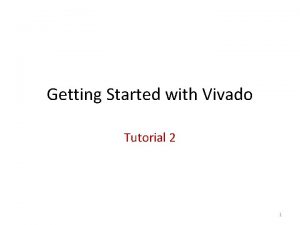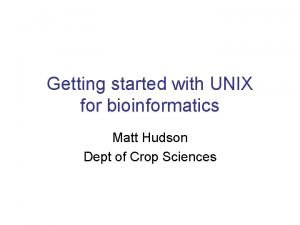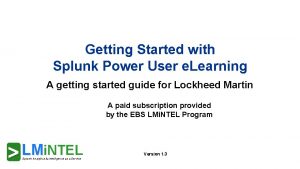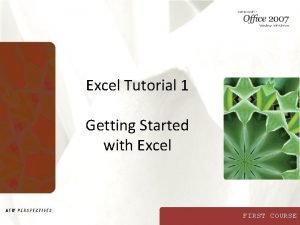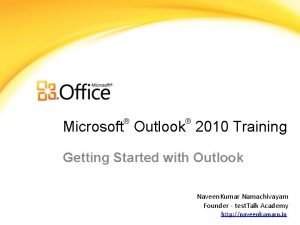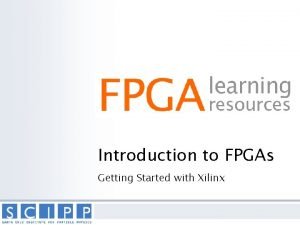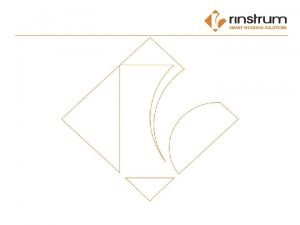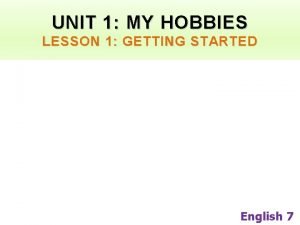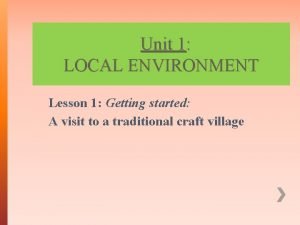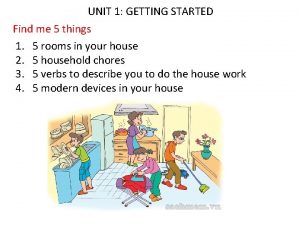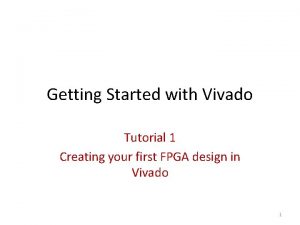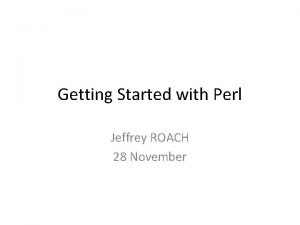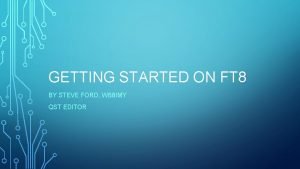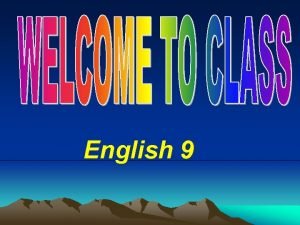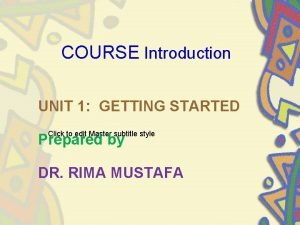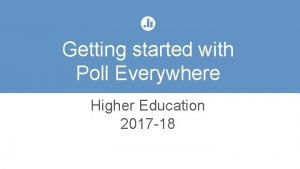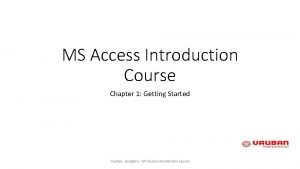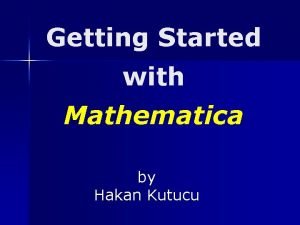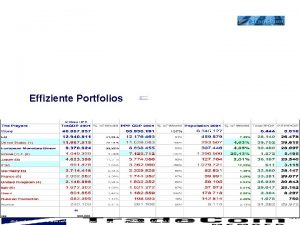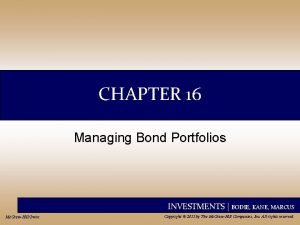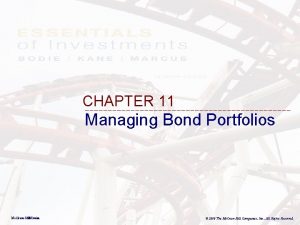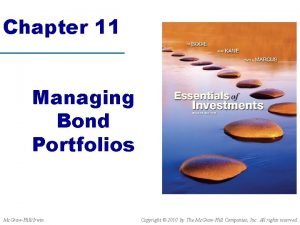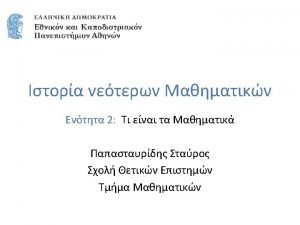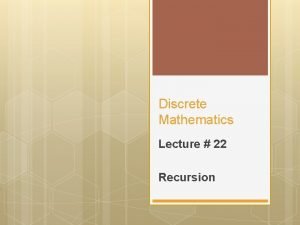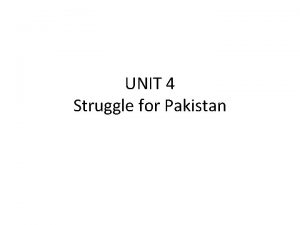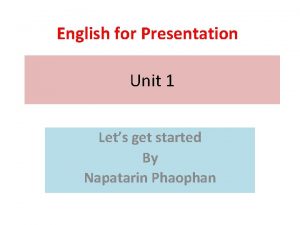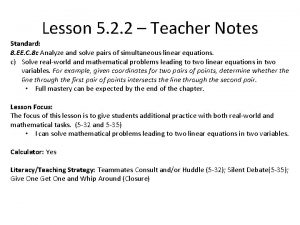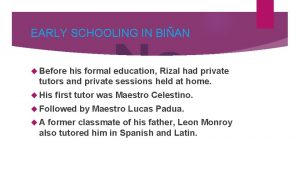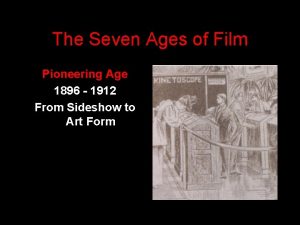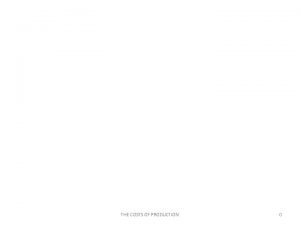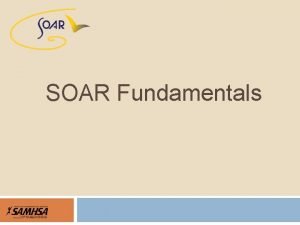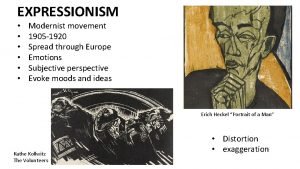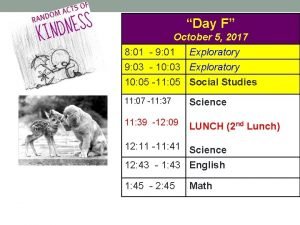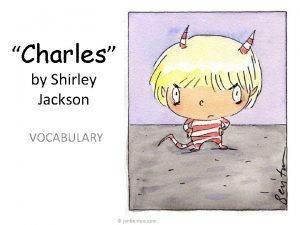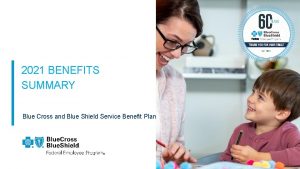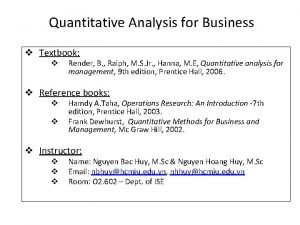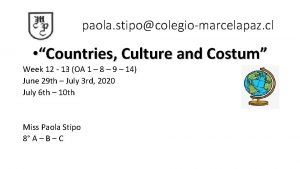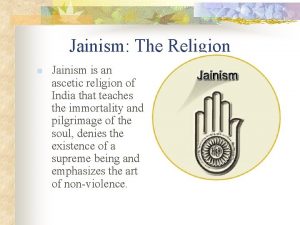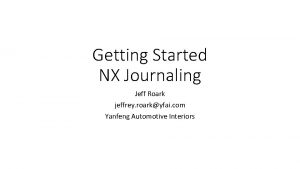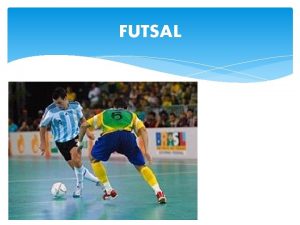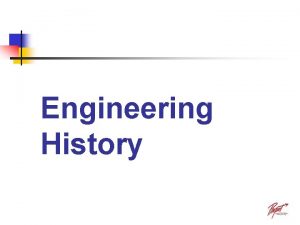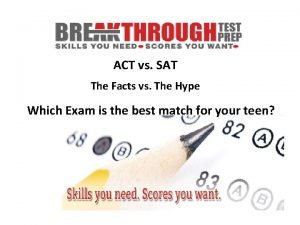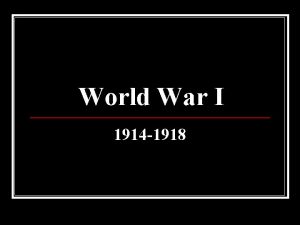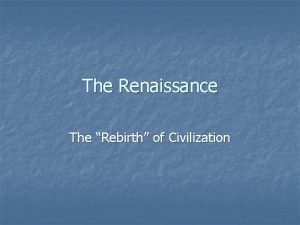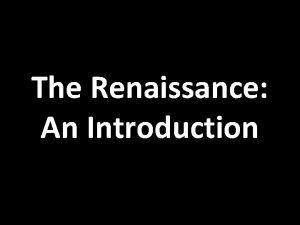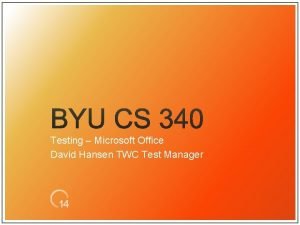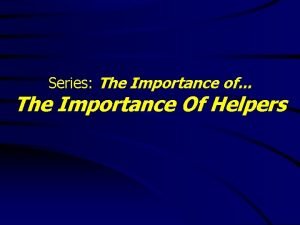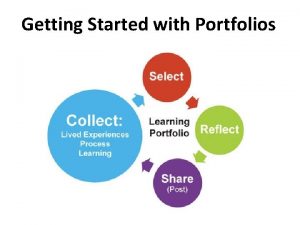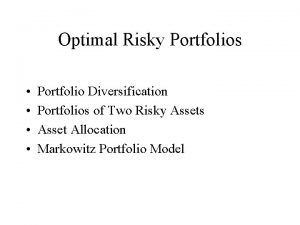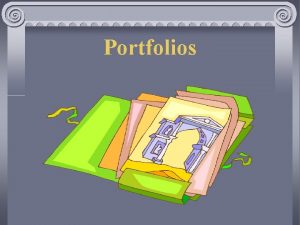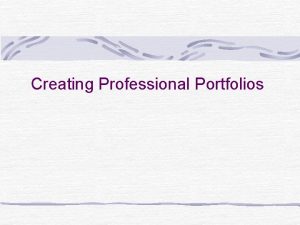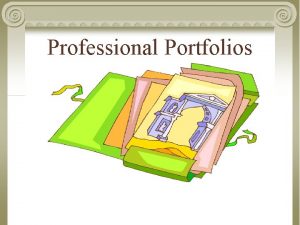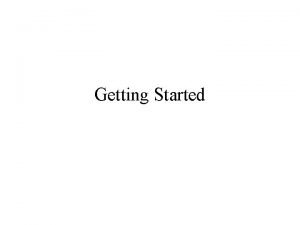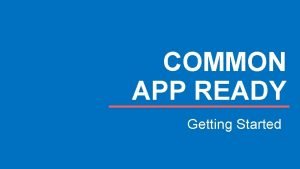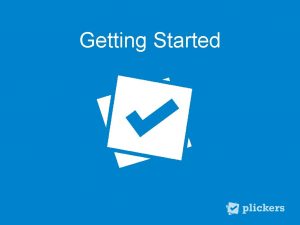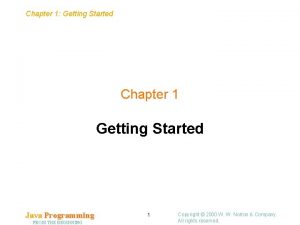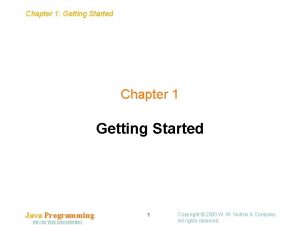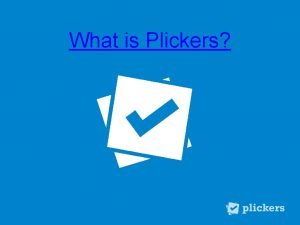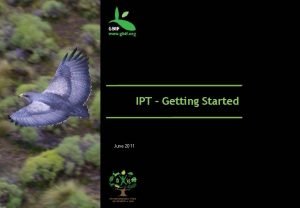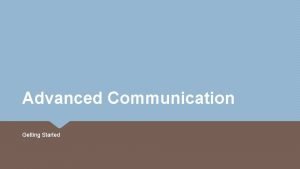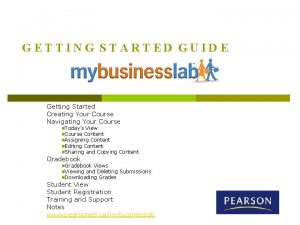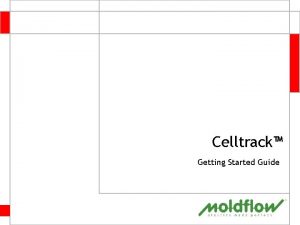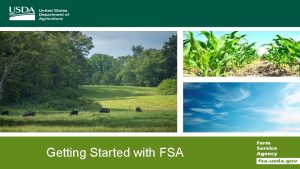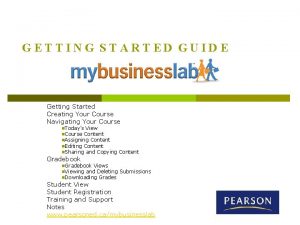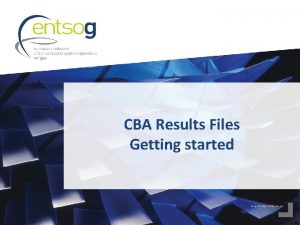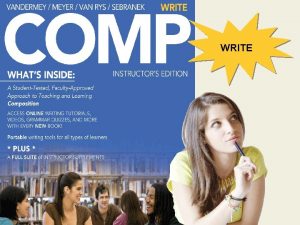Getting Started with Portfolios Mathematics Definition A portfolio




































































- Slides: 68

Getting Started with Portfolios Mathematics

Definition • A portfolio is a collection of student work that can be further defined by how the portfolio is used. • "A portfolio is a purposeful collection of student work that tells the story of student achievement or growth. "

Collect, Select, and Reflect • Weekly journal entries • Solutions to student-selected homework problems explained in writing • A “synthesis entry” relating the current weekly topic to previous topics and/or to other math principles previously studied.

Reflect and Learn • What is the process I went through while creating this piece? • Who or what first influenced me to create this piece? • What risks did I take? • What new knowledge did I gain? • Why was this piece an experiment for me? • What did I learn? • Why did I choose this piece for my portfolio? • Do I have questions about this piece? • If I were going to redo this piece, what would I do differently?

Self-Directed Learners • Self-Analyzing • Self-Referencing • Self-Evaluating • Self-Correcting

Artifacts • • • Rough Drafts Graded Assignments Papers Showcase Pieces Critiques or Summaries of Reading Self Reflection Pieces Homework Assignments Journal Entries, Peer Responses Graphics, Spreadsheets, Online Discussions

Portfolio: Background • Report Card and Standardized Test Information • Baseline Assessment/Prior High Stakes Assessment • Goal Setting Sheets • Work in the student's primary language.

Goals for the Year Reassessed at the end of each quarter • 1) What I plan on taking out of this class is … • 2) My strengths in math include … • 3) My weaknesses in math include … • 4) The things I plan to improve upon are …

Portfolio: Math Problems • Open-ended questions and solutions to difficult problems that detail problem-solving abilities • Problems created/posed by the student • Responses to challenging questions and problems • Draft, revised (corrections or errors and misconceptions), and final versions of student work on a complex mathematical problem

Portfolio Test Problem On each test, certain problems are designated as portfolio problems. Challenging and rich task that require application and synthesis (HOT). If solved correctly, they may used to satisfy a portfolio requirement.

Struggle Problems • Non-routine, open-ended problems, for which the solution strategy is not known in advance. • Place our students in situations that encourage them to tap their prior mathematical knowledge and common sense. • In most cases, Struggle Problems will not be solved with a direct application of the content being studied in the current unit (usually connected to the content in the next unit). • Students have a chance to tap their intuitive understanding of a mathematical concept, before they receive any direct instruction on the subject.

Portfolio: Journals • A written explanation of the contents of the portfolio • A letter from the student to the reader of the portfolio, explaining each item. • The use of mathematics in another discipline • Analyses of Problem Situations, Simulations, Logs of Experiments

Math Journal • Once or twice a week. • These short written entries • Satisfy any of the portfolio requirements for: – Reasoning and Proof – Representation – Connections – Communication Requirements.

Journals May Address … • 1. Attitudes/feelings towards class 2. Thoughts on your personal progress (goals) 3. Strengths and weaknesses 4. What you have learned

Reflection on Work • What was the problem asking you? • What process did you go through when solving this problem? Include any wrong turns. • What concepts that you have learned does this work demonstrate? • How does your work show that you understand these concepts?

Reflection on Portfolio • 1. Completed at end of the unit/year 2. Identify areas of improvement 3. Identify areas that still need improvement 4. Evaluate/Revise your goals

Portfolio: Math Writing • A written report on a major topic in math • The student's written account of his or her growth in mathematics • Math Autobiography • A book review, newspaper and/or magazine article review or synopsis

Math Autobiographies • It should include – 1) a history of their experiences as a young mathematician 2) a history of their feelings about math and what affected those feelings – 3) a plan for what they intend to do in math in the future.

Reflective Essay • A student essay reflecting on the portfolio and progress toward learning goals is an excellent tool. • Essay requires students to: – reflect on strengths and weaknesses in their learning, considering individual learning style and life circumstances. – must explain ways to use this knowledge in future learning situations. – must describe four useful concepts or skills and select examples from their work to illustrate either concept knowledge or skill mastery.

Portfolio: Teacher Input • A description by the teacher of a student activity that displayed understanding of a mathematical concept. • Audio tapes of student-teacher interview • Teacher-completed checklists, rubrics, scoring guides • Notes from an interview by the teacher (or another student).


Portfolios: Along the Way • Periodic, Self, Peer, Group-Assessments • Student Writing Samples Related and/or connected to Math • Descriptions of How Students Feel About Math and/or the application of its concepts • Pre- (Post) Unit Tests, Midterm, and Final

Portfolio: Think About … • Art projects • A photo or sketch made by student of student's work with manipulatives • Work from another subject area • Pictures, Graphs, Dictated Reports • Mathematical research

Portfolio Projects: Algebra

Tessalation

Snowflakes

Portfolio: Group Work • A report of a group project • Group work samples: written, video, audio, and pictorial • A group’s records for the process leading to responses to questions/problems • Group reflection and peer evaluation

Portfolio Format • Folder of papers • A three-ring notebook • A box containing multimedia, a diskette • Online portfolio (e-Portfolio)

Portfolio Guide • Understanding the arrangement and context of the portfolio: – Table of contents – Student comments or Narrative (either recorded or written) – Self-Reflection Paper or Letter

e. Portfolio

e-Portfolio • Electronic collection of student work • On CD-Rom or on the Web • Used to chart progress, build self-esteem, encourage reflection and more.

Assessment Portfolios • Progress and Growth. • Formative or Summative

Formative Assessment • The teacher – intervenes in the creative process – reviews drafts – makes recommendations for revision. • The purpose of formative assessment is to develop the students' skills.

Summative Assessment • The instructor evaluates a finished product for a grade. • The purpose of summative assessment is to evaluate and rate quality. • Grade the entire portfolio holistically or grade individual pieces and total or average the scores. • Teachers can assess in groups (two instructors scoring anonymous student work and a third scoring to settle any disputes).

“Medium of Instruction” • The primary instruction method is to guide the student's assessment of the portfolio – student's reflection – self-evaluation – narrative describing the portfolio artifacts. • Identify: range, depth, and growth • Push students to evaluate their portfolios by answering open-ended questions, such as: – pieces they like, pieces that were difficult to write, pieces that surprised them in some way, and pieces that they did not want to stop writing when time was up.

Range, Depth, and Growth • Combines: – all the styles and genres of writing (Range) – with all the revisions of one piece of writing (Depth) – And the reflective essay or letter written to describe overall development as shown through the portfolio (Growth).

Portfolio Evaluation • Holistic evaluation based on whatever criteria you decide are important/necessary. • Evaluation tools: competency matrices, scoring guides, and student reflective essays • Peer evaluation, or self evaluation.

Competency Matrix • Learning outcomes and competencies achieved for each assignment are listed in a grid. • Examples of learning outcomes are teaming skills and creative problem solving skills. • Categorizes learning objectives into two types: affective objectives (receiving, responding, valuing) and cognitive objectives ( knowledge, comprehension, application, analysis, synthesis, evaluation).


Another Reflective Assignment • Questionnaire (written assignment), it can also form the basis of a student/instructor conference. • Students answer questions about: – the process of creating the artifact, – the risks taken, new knowledge gained, and reasons for selecting the piece – still unanswered questions about the work, – students' ideas about redoing the piece differently


Roundtable Evaluation • Use of math language: their ability to use and understand math vocabulary. • Ability to solve "pure" math problems connected to a big idea. • Ability to apply the math concept to solve a real world problem or • Ability to connect one math concept to another.



• EXTRA SLIDES

Cover Sheet

• D. Samples of your best/worst work 1. be sure to write why you chose them on the item, itself E. Anything else you feel would contribute to it

Ultimately, they provide a … • collection of multiple samples of student work over time enabling us to – (a) get a broader, more in-depth look at what students know and can do; – (b) base assessment on more 'authentic' work – (c) have a supplement or alternative to report cards and standardized tests; and – (d) have a better way to communicate student progress to parents

Benefits of Portfolios • Readily adaptable to any grade, ability, or motivational level • Document student growth, change, and risk taking • Support dialogs between teachers and students • Integrated into the curriculum as records of classroom performance • Students to increase critical thinking, self reflection, knowledge, participation, and responsibility for learning

Instructional Benefits Include: • Unlike tests, “supplement rather than take time away from instruction”. • Close examination of work, comparison over time, identification of strengths and weaknesses through good criteria that define quality, and goal setting. • They provide a convenient way to showcase work • They allow the instructor to be more of a coach.

3 Categories of Literacy Portfolios • Writing, Learning and Self-Reflective • The Writing Portfolio emphasizes writing as a craft and contains such items as – drafts of a paper, – writing done in other disciplines, – essays about literature, – in-class writing exercises, – essays about the writing process as self-exploration.

Learning & Self Reflective Portfolio • The learning portfolio emphasizes writing as a method of learning and making new meaning. • It contains such items as: – journal entries, – reader-response papers, – multimedia entries (videos, music, artwork), – collaborative projects, – essays about the learning process as self-exploration. • The self-reflective portfolio focuses on selfdevelopment and personal identity.

Teacher's Method of Assigning Portfolio • “Chinese dinner menu approach” • Emphasizes the teacher and places the student in a passive role. • Range, Depth, and Growth

“Open Portfolio” • Students set the goals and choose the pieces • Includes a portfolio letter to describe the selected items and their reflections.

“Passportfolio” • Portfolio is used to certify competence to move to the next level.

Two Main Categories • Most portfolio uses fall into two main categories: –Assessment –Instruction

ELA Portfolio • Vermont Portfolio Program: Writing Portfolio Rating • Can apply to any portfolio paper or can be adapted for the entire portfolio. • Five categories: purpose, organization, details, voice/tone, and grammar/usage/mechanics (GUM). • The evaluator, whether teacher, student, or peer, can rate each category on a scale of 1 to 4. The form also contains explanations for each rating.

ELA Holistic Scoring Guide #1 • Another scoring guide for individual papers is the holistic scoring guide • Each paper is rated on a scale of 1 to 6. The specific categories are • (1) incompetent • (2) inadequate • (3) weak • (4) competent • (5) strong • (6) superior.

ELA Holistic Scoring Guide #2 • A holistic scoring guide for the entire portfolio has a scale from 1 to 6 and the categories are • (1) poor, • (2) below average • (3) fair • (4) good • (5) very good • (6) excellent

e. Portfolio. org • Use e. Portfolio to achieve your goals: • » Create a plan of study • » Maintain a dynamic resume of your experiences in life, work, study, and at play • » Store examples of your achievements (documents, photos, graphics, spreadsheets, web pages) • » Create media rich Guest Views to share with family, friends, employers, faculty, and others • » Showcase your accomplishments!


Implementation Ideas and Examples: Portfolios Types of Portfolios – Showcase – Teacher-Student Portfolio – Teacher Alternative Assessment Portfolio

Implementation Ideas and Examples: Portfolios Display Ideas for a Mathematics Portfolio – – – – File folder Binder File box Container C D rom Pizza box Poster board folder Photos of work that does not fit in display

Implementation Ideas and Examples: Portfolios Plus: A critical Guide to Alternative Assessment by Linda Mabry Provides a portfolio planner for teachers who would like to begin to use portfolios in their classroom.

Implementation Ideas and Examples: Portfolios Suggested Items for Mathematics Portfolio – – – – Open ended questions A report or group project Video tapes of student work Problems posed by student Mathematical research Mathematical autobiography Draft, revised, and final versions of student work on a complex mathematical problem – Papers that show student correction of errors or misconceptions (Koca, 1998)

Table of Contents • End of the semester: students select three portfolio entries representing their best work, worst work, and best illustration of learning. They include a paragraph explaining their choices.

Assessment Sheet • A scoring guide (assessment sheet) for the entire portfolio • lists items submitted, dates reviewed, points possible for each assignment, and points earned. • Also, for each assignment, the guide describes standards for acceptable and unacceptable work. • It can also serves as a table of contents. • The individual assignments are graded, but the portfolio itself is not.

 The secret of getting ahead is getting started
The secret of getting ahead is getting started Getting started with vivado ip integrator
Getting started with vivado ip integrator Unix for bioinformatics
Unix for bioinformatics Education.splunk
Education.splunk Rancher slack
Rancher slack Getting started with excel
Getting started with excel Getting started with microsoft outlook learning
Getting started with microsoft outlook learning Getting started with xilinx fpga
Getting started with xilinx fpga Lua getting started
Lua getting started Unit 1 hobbies
Unit 1 hobbies Unit 1 local environment getting started
Unit 1 local environment getting started Unit 1 getting started
Unit 1 getting started Infuecers gone wild
Infuecers gone wild Getting started with vivado
Getting started with vivado Dr jeffrey roach
Dr jeffrey roach Getting started with ft8
Getting started with ft8 Unit 2 listen and read
Unit 2 listen and read Unit 1 getting started
Unit 1 getting started Getting started with poll everywhere
Getting started with poll everywhere Android development getting started
Android development getting started Tipos de habilidades del pensamiento
Tipos de habilidades del pensamiento Getting started with eclipse
Getting started with eclipse Hakan kutucu
Hakan kutucu Activity sheet 1 how diversified are these portfolios
Activity sheet 1 how diversified are these portfolios Effiziente portfolios
Effiziente portfolios Managing bond portfolios
Managing bond portfolios Managing bond portfolios
Managing bond portfolios Bond duration formula
Bond duration formula Portfolio in mathematics
Portfolio in mathematics What is portfolio
What is portfolio The science of quantity
The science of quantity Recursive definition in discrete mathematics
Recursive definition in discrete mathematics When was globalization started
When was globalization started In which city urdu hindi controversy started
In which city urdu hindi controversy started Khalid al dossary
Khalid al dossary 10912 ra
10912 ra How did samaritan's purse start
How did samaritan's purse start Unit 1 let's get started
Unit 1 let's get started What started the cold war
What started the cold war Who is the founder of herbalife
Who is the founder of herbalife Tcs maitree
Tcs maitree Classical period started from 1750 to 1872
Classical period started from 1750 to 1872 Nancy started the year with $425 in the bank
Nancy started the year with $425 in the bank Where did jose rizal start his formal education
Where did jose rizal start his formal education Wwii show
Wwii show Pioneering age
Pioneering age Implicit cost example
Implicit cost example Soar
Soar What started the expressionism movement
What started the expressionism movement The speedy fast ski resort has started to keep track
The speedy fast ski resort has started to keep track Charles by shirley jackson vocabulary
Charles by shirley jackson vocabulary Blue cross blue shield fep vision
Blue cross blue shield fep vision Neuschwanstein castle construction
Neuschwanstein castle construction Gina fox has started her own company
Gina fox has started her own company Wheelofnames.con
Wheelofnames.con Jainism belief
Jainism belief Nx get started
Nx get started Juan carlos ceriani
Juan carlos ceriani Ron has just started as a scrum master
Ron has just started as a scrum master When was engineering invented
When was engineering invented Village cooperative movement started in
Village cooperative movement started in Lets get started images
Lets get started images Allied forces ww1
Allied forces ww1 What started ww1
What started ww1 Where did the renaissance begin
Where did the renaissance begin What started the renaissance
What started the renaissance The day started
The day started Importance of helpers
Importance of helpers When labour day started
When labour day started

